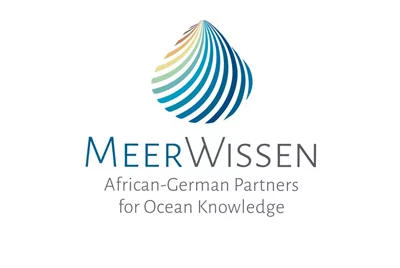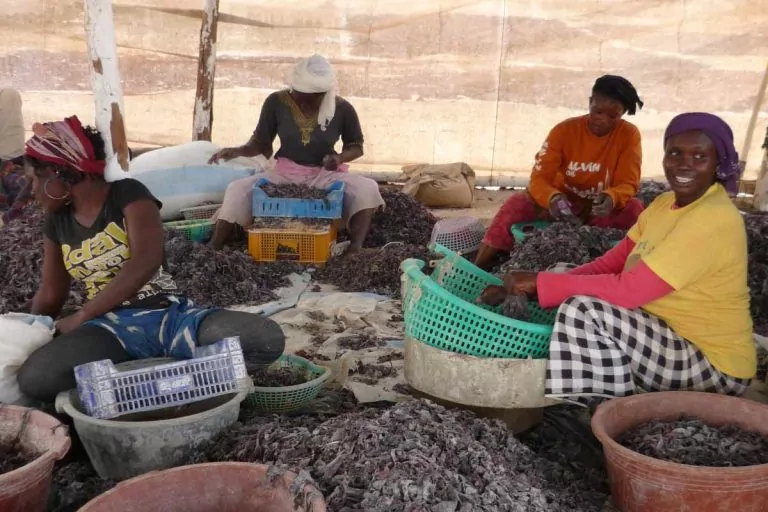Impact Story
Harnessing Seaweed for a Sustainable Future
How CLIMALG-SN is Building Climate-Resilient Blue Economies in Senegal
Senegal’s maritime economy is highly depending on fish and fishing. Due to overfishing, pollution, and climate change the fisheries sector is at risk. To maintain the socio-economic and food security role of fisheries in Senegal, the government is prioritising aquaculture, including seaweed, as part of the national Emerging Senegal Plan (PSE – Plan Senegal Emergent). Seaweed acts like an underwater forest, sequestering carbon dioxide, supporting juvenile fish, and providing habitats for various marine species. Though not traditionally used for income or food in Senegal, seaweed farming could provide a new source of livelihood for coastal communities. The CLIMALG-SN project is exploring how seaweed habitats can foster blue growth, enhance biodiversity, and improve ecosystem services in Senegal.
What unique issue is climalg-sn addressing?
The development of seaweed exploitation, including natural harvesting and cultivation, could become an important factor in the well-being and livelihoods of many people in Senegal, but this requires a better understanding of seaweeds. Data on their biodiversity, response to different management regimes, potential for sustainable economic use and identification of barriers are urgently needed. Senegalese researchers have been working on a classification of macroalgae for several decades. However, it is inherently difficult to distinguish algae species based on morphology alone. CLIMALG-SN uses DNA and environmental DNA (eDNA) to identify species and habitat diversity.
Mapping and understanding the converging interests of the different stakeholders involved in the conservation, cultivation and harvesting of macroalgae helped to propose governance measures that should be considered by decision-makers when formulating policies for ecosystem-based management or the sustainable conservation and use of natural seaweed habitats. CLIMALG-SN also explored the potential of seaweed ecosystems to counteract the ongoing loss of biodiversity.
Durable partnerships for CLIMALG-SN:
What has been achieved so far?
CLIMALG-SN has
- conducted more than 70 field missions, collected more than 1,000 seaweed and water samples, performed DNA analysis on 900 samples, and thus creating a new inventory of Senegalese seaweed species.
- took more than 5,000 photos and videos of the beaches and the underwater realm to determine the seaweed’s biodiversity – and archived all files in the database ELEMENTS at GEOMAR.
- established a frequently updated website and two databases as project legacy, containing more than 500 entries on Senegalese seaweeds.
- held the first international conference on macroalgae: “Seaweed for blue economies, biodiversity and ecosystem services”.
What else has CLIMALG-SN achieved?
CLIMALG-SN has also
- raised awareness of the project’s goals and activities among different target audiences.
- defined and coordinated communication needs of different stakeholders to promote the project and disseminate its results through flyers, posters, articles, press releases, media channels and scientific publications, reports, and recommendations to Senegalese policymakers and other stakeholders.
- initiated and improved the process of the Nagoya Protocol on Access and Benefit Sharing in Senegal (Ministere de l’Environnement et du Developpement durable, Direction des Parcs nationaux) with the aim to ensure fair and equitable sharing of benefits from genetic resources and traditional knowledge.
In what way has CLIMALG-SN contributed to local capacities?
Seaweed farming is not practised in Senegal as it is considered a distraction by fishermen who are not aware of the benefits of seaweed. However, the project has been able to stimulate interest among local communities, who have been educated about the value of seaweed (cultivation techniques, nutritional value, value chain of exploitation, etc.). Training sessions for women’s associations and schools reached more than 100 local stakeholders. As an additional support of the women’s economic interest groups, a safety training to protect seaweed harvesters from hypothermia and drowning was conducted in February 2023, donating life jackets, waders, and basket stretchers afterward. The CLIMALG-SN project was able to make use of local knowledge on identification and how to harmonise it with new technologies that could facilitate the intensive and time-consuming work of monitoring in the region. Sub-regional partnerships have been established with frequent exchanges on the evolution of seaweed biodiversity and its valorisation, moving towards joint actions and research activities involving the international community.
CLIMALG-SN has contributed to multiple scientific studies, as well as Master and PhD projects.
CLIMALG-SN has convened stakeholders from a range of target groups in seaweed production, including small-scale fishermen, village chiefs, and women and young adults.
What has changed for policymakers through the results of CLIMALG-SN?
Knowledge transfer of modern methods of marine environmental monitoring and training of marine ecologists is a clear requirement for a more sustainable coastal management in Senegal. CLIMALG-SN has built capacity for ongoing research activities on the potential of seaweeds within blue growth strategies, which include the improvement of marine biodiversity and ecosystem services for the people of Senegal and the sub-regions. Over the course of the project, the partners developed a stimulating and often critical dialogue at the science-policy interface. The implications of the costs and benefits of seaweed conservation, cultivation and harvesting for adaptive governance, as well as stakeholder attitudes and perceptions of economic and environmental impacts, were analysed to mitigate potential conflicts and enable sustainable future expansion of seaweed. CLIMALG-SN also fostered novel digital solutions and innovations, and initiated activities and new projects to take seaweed work in Senegal into the future. Thus, the project has not only been able to contribute to a more sustainable use of seaweed habitats, but also to a more efficient management of coastal environments in Senegal.

